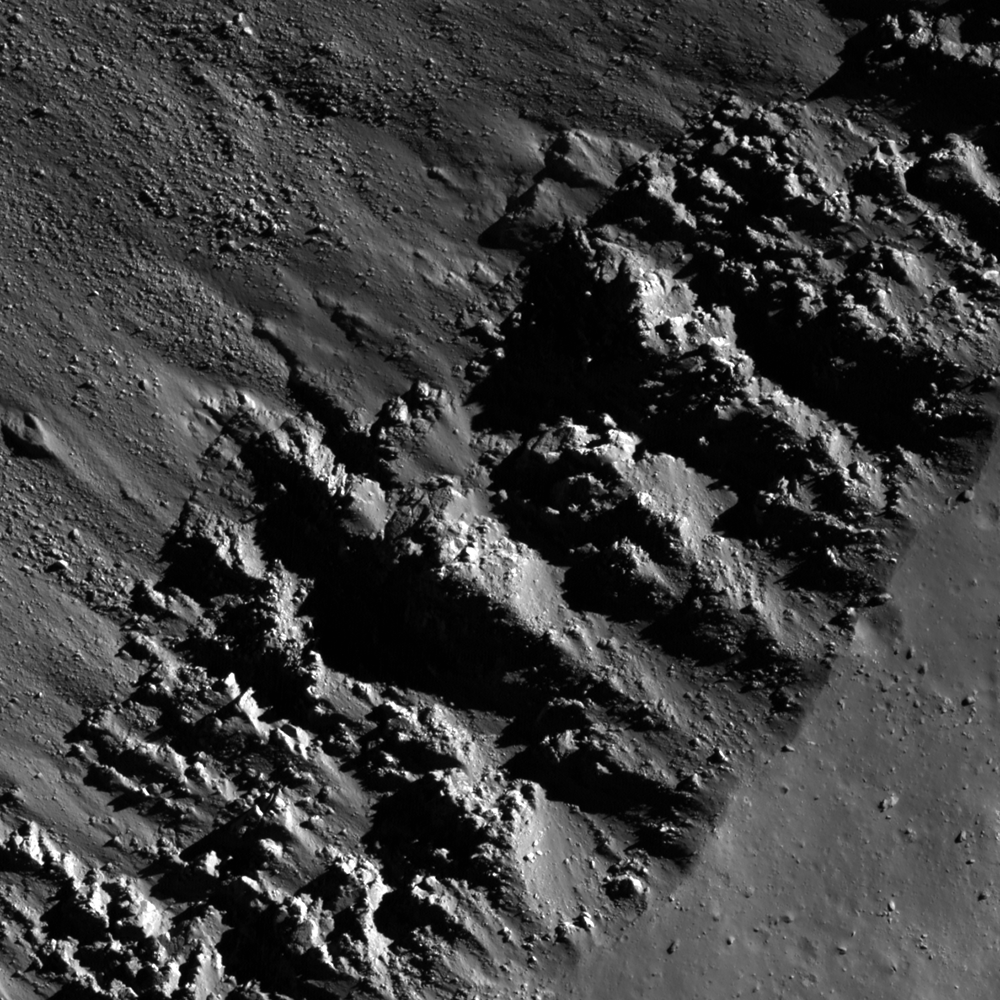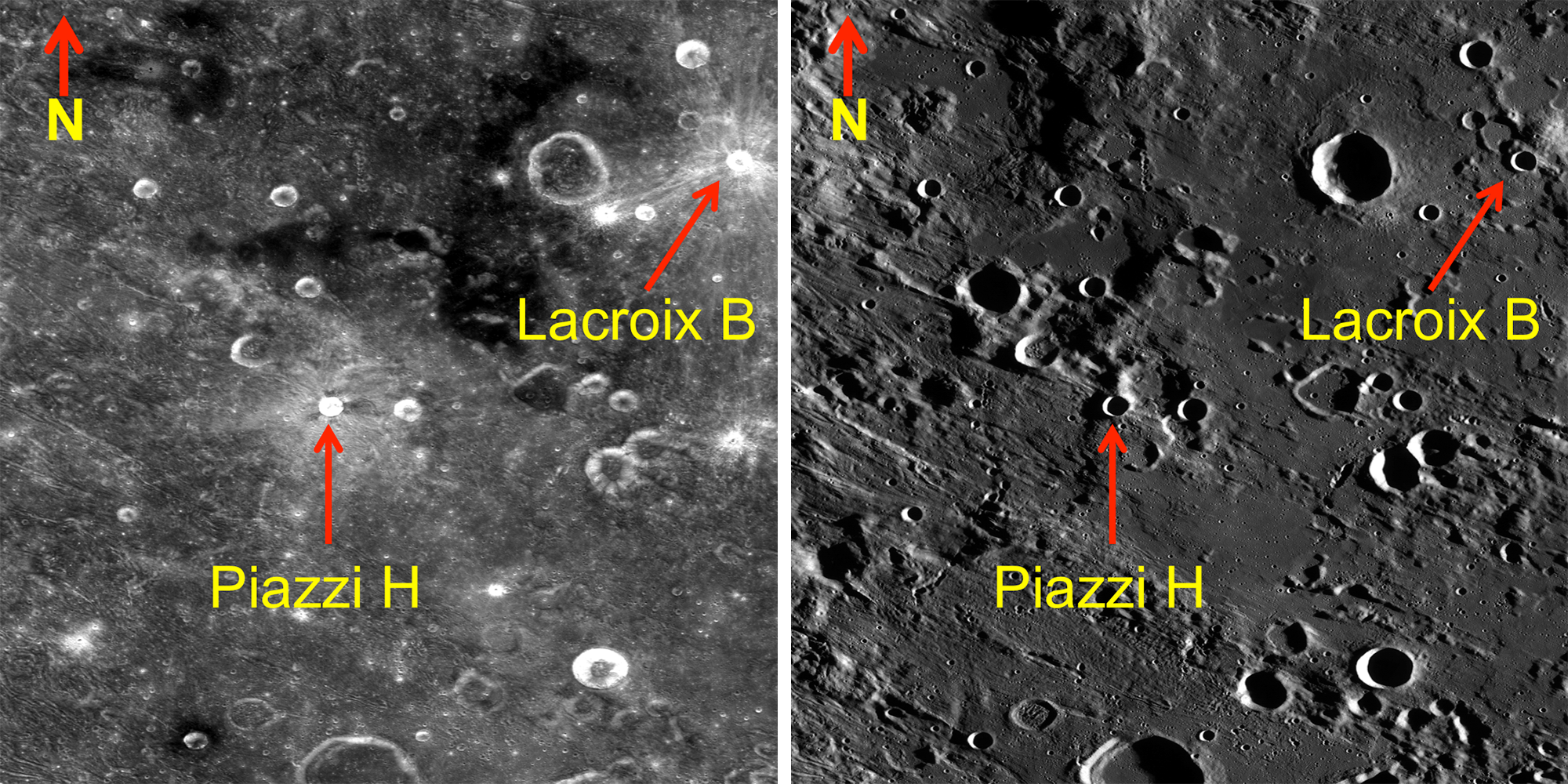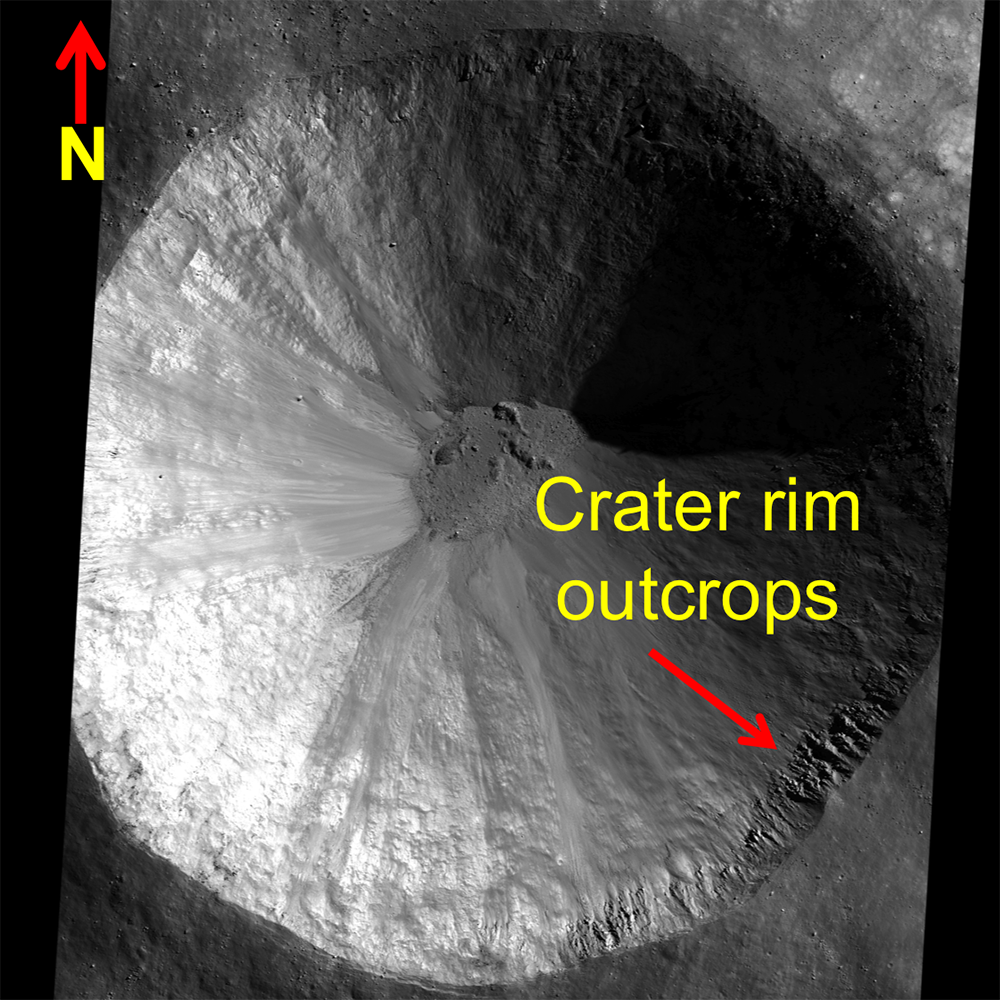
The rocks that form Piazzi H's (-40.18, 295.40) beautifully textured upper crater wall hang precariously from near the crater rim. Under the action of gravity and time, material from crater walls continuously slough off. This fall to a lower gravitational potential is one of the reasons why old craters have a smoother appearance (the other reason is bombardment by micrometeorites which pulverize craters into fine grained dust).
Why do these overhanging rocks not succumb to the force of gravity? Perhaps this is telling us that this crater is young, gravity has not had enough time to pull those rocks down. One way to determine if a crater is young is to look for high reflectance ejecta, and the WAC 643 nm normalized reflectance map allows us to do just that.
The image below, on the left, is the from a WAC 643 nm normalized reflectance mosaic showing the high reflectance ejecta of Piazzi H. We also see a similar pattern with from the nearby crater Lacroix B, implying they are of similar ages. But we don't find the same rock overhangs on the walls of Lacroix B.
One possibility is that the structure we are seeing are the ragged edges of a bedrock layer. A strong coherent layer might have enough resistance to stress to better support these overhangs. Lunar scientists use measurements of layered deposits (see image below) to understand ancient lava flows on the Moon. Even though this crater is located in the lunar highlands, what we may be seeing is uncovered cryptomare. A recent study on rock outcrops on lunar crater rims use measurements to understand the flow of material during crater excavation.
Explore the full resolution NAC mosaic of crater Piazzi H. The shadows cast by the textured crater wall make this crater a particularly beautiful one.
Related Posts:
Published by Raquel Nuno on 29 April 2014

